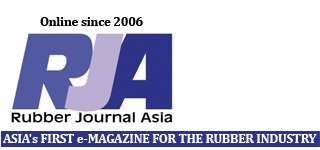Worldwide demand for rubber processing chemicals is expected to increase 4.4% each year through 2020 to 1.5 million metric tonnes, according to World Rubber Processing Chemicals, a new study from The Freedonia Group, a Cleveland-based industry research firm.
This growth will be driven by rising rubber consumption and the increasing rubber processing chemical loadings necessary to manufacture premium tyres, high performance automotive and industrial goods, and a range of other products where expectations of quality and long service lives are increasing over time.Advances are expected to be strongest in the developing countries of the Asia/Pacific region, but improving conditions in the mature markets of the US, Western Europe and Japan will also contribute significantly to growth.
Demand for rubber processing chemicals will rise faster than rubber consumption, but demand for these chemicals will remain tightly correlated with rubber consumption within individual countries. As such, broad trends that influence demand for rubber used in tyres and industrial products will have a strong impact on rubber processing chemicals.
According to analyst Jason Carnovale, “Rising motor vehicle ownership rates in developing nations will support local tyre production, necessitating additional consumption of processing chemicals.” Non-tyre rubber chemical demand will also benefit from a healthy outlook for world motor vehicle production, as well as continuing industrialization in the developing world.
The potential for an economic slowdown in China is a significant concern for the rubber processing chemical industry. Rubber demand growth in China has already decelerated in recent years as the country faces challenges related to its real estate and financial markets. However, the Chinese market is expected to remain healthy through2020 as motor vehicle production remains strong, and the country is forecast to contribute nearly half of incremental global demand growth.
Both Japan and Western Europe are expected to see a reversal from declines in rubber processing chemical demand experienced between 2010 and 2015, while US demand accelerates due to improving market conditions. However, advances in all three of these industrialised areas are projected to remain well below the world average through 2020, reflecting market maturity and limited opportunities for additional rubber consumption or increases in processing chemical loadings.

